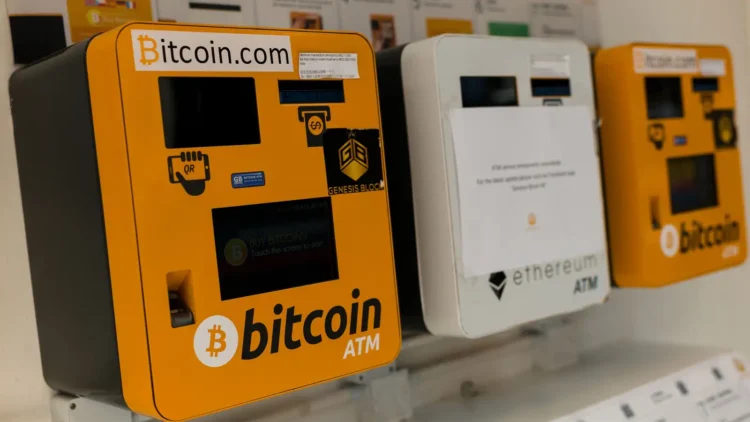Crypto ATMs were introduced as a promising solution to help boost the adoption of digital currencies by encouraging their use in day-to-day transactions. These machines allow users to buy and sometimes sell cryptocurrencies using cash or credit cards and as such, could be used to conduct transactions in various locations, from gas stations to convenience stores and remove many barriers that might have previously deterred individuals from using cryptocurrencies.
The first Bitcoin ATM debuted in Vancouver, Canada, in 2013. At that time, there were over 10 million Bitcoins in circulation. As of March 2024, this number has risen to over 19 million. This increased circulation suggests growing accessibility and adoption of Bitcoin, but what role has the convenience offered by crypto ATMs played in this growth?
The Impact of Crypto ATMs on Digital Assets Accessibility
The number of crypto ATMs has skyrocketed from fewer than 10 in 2013 to over 10,000 by 2020, and by June 30 2024, that figure has surged to 38,279. From Bitcoin to Ether and Litecoin, crypto ATMs now support a range of digital currencies, considering they were solely built for Bitcoin at first.

The United States has been at the forefront of this growth, hosting 82.7% of the world’s crypto ATMs. Canada also contributes significantly, accounting for 7.7% of the global total.
Crypto ATMs’ ease of use and deployment, as well as the privacy and security they offer users, have been highlighted as key factors driving this uptick in the number of crypto ATM installations.
Speaking with ATM Marketplace, Gabriella Kusz, CEO of the Global Digital Asset and Cryptocurrency Association, noted, “As more people become interested in buying crypto with cash, the easy-to-use, familiar technology allows consumers to securely expand and diversify their portfolio.”

However, the concentration of these machines in specific locations already suggests a limitation of their capacity to boost crypto usage for daily transactions.
Crypto ATMs vs. Centralized and Decentralized Exchanges
While crypto ATMs have grown in number, their impact on overall cryptocurrency transaction volumes is relatively small compared to CEXs and DEXs.
In Q1 2024, the total trading volume in the crypto market was $5.3 trillion. CEXs accounted for $4.8 trillion (about 90.6%), while DEXs contributed $523 billion (about 9.9%). This leaves a very small portion for other methods of accessing and using cryptocurrencies, including crypto ATMs.

Both CEXs and DEXs have also shown significant growth. CEXs grew by 96% from the previous quarter, while DEXs grew by 76.5%. This rapid growth further overshadows the impact of crypto ATMs.
The data suggests that most cryptocurrency users prefer online platforms (CEXs and DEXs) for their transactions, rather than physical ATMs. This could be due to factors like convenience, lower fees, or a more comprehensive list of supported cryptocurrencies on these platforms.
Why is the Impact of Crypto ATMs so Minimal?
Despite the growing number of crypto ATMs worldwide, they are not evenly distributed across all countries or regions. The data shows that about 90% of all crypto ATMs are in just two countries: the US and Canada.
This concentration suggests that the impact of crypto ATMs is not truly global. Many countries and regions have few or no crypto ATMs, limiting their potential to increase cryptocurrency adoption in those areas.

This concentration could be due to various factors such as regulatory environments, market demand, or economic conditions in different countries. In a conversation with Law360, CipherTrace CTO John Jeffries predicted that crypto ATMs faces an a higher level of regulatory scrutiny.
Meanwhile, another pressing issue is their association with fraud and criminal activity. In July 2024, Matthew Hogan, a detective with the Connecticut State Police focusing on crypto cases, highlighted how organized crime groups exploit these machines, persuading victims to deposit cash into crypto ATMs.
A case in point is a recent incident in Chicago, U.S., where a 77-year-old woman was scammed into depositing $9,000 into a crypto ATM, believing she was responding to a legitimate demand from a supposed Federal Trade Commission agent.
High transaction fees present another significant drawback. Crypto ATMs often charge fees as high as 20% per transaction, which can deter legitimate users and attract those who prioritize anonymity and speed over cost.
Security concerns also pose a critical issue, with many crypto ATMs vulnerable to hacking and tampering, particularly if they lack advanced security measures.
Technical and operational problems further complicate the situation. Users may encounter issues such as limited machine functionality, connectivity problems, or errors in transaction processing. Malfunctions could lead to incorrect transaction statuses, creating opportunities for fraud and complicating the user experience.
What Does the Future Look Like for Crypto ATMs?
Looking ahead, the global crypto ATM market still shows promise despite challenges. Valued at USD 182.1 million in 2023, it is projected to grow at a compound annual growth rate (CAGR) of 57.4% to reach $16.85 Billion from 2024 to 2033.
This growth suggests that as more people gain access to these machines, their role in integrating cryptocurrencies into everyday financial transactions is expected to grow.
The future of crypto ATMs looks both promising and dynamic. One potential development is the fusion of traditional ATMs with crypto kiosks. While this integration may still be some way off, the direction of cryptocurrency advancement suggests a seamless blending of these technologies could be on the horizon.
However, regulatory clarity will play a crucial role in shaping this future. As governments establish clear compliance guidelines, it will become easier for operators to navigate the legal landscape and ensure their operations align with evolving regulations.
While crypto ATMs have played a role in increasing the accessibility of digital currencies, their impact has been overshadowed by the growth of online trading platforms.
However, as the divide between digital currencies and traditional fiat money continues to narrow, how important the role of crypto ATMs will play remains an intriguing thing to watch.
Disclaimer: This article is intended solely for informational purposes and should not be considered trading or investment advice. Nothing herein should be construed as financial, legal, or tax advice. Trading or investing in cryptocurrencies carries a considerable risk of financial loss. Always conduct due diligence.
If you would like to read more market analyses like this, visit DeFi Planet and follow us on Twitter, LinkedIn, Facebook, Instagram, and CoinMarketCap Community.
Take control of your crypto portfolio with MARKETS PRO, DeFi Planet’s suite of analytics tools.”





















